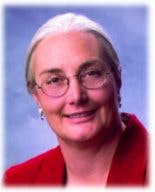Q:
We have an ongoing debate in
our blood bank about the relative propriety of using self-administered screening forms as opposed to directly interviewing donors. With the need to reduce overhead, the director is increasingly relying on self-administered forms to save staff time. What are the risks?
A:
Cognizant of the need to
streamline donor services, the Food and Drug Administration (FDA) has issued draft guidelines for the implementation of self-administered assessments for blood donors. It is a good idea to take a look at these draft guidelines, available at
www.fda.gov/cber/gdlns/donorsaq.htm, before developing, implementing or revising donor questionnaires.
The legal risk in any donor-screening process, whether interview or written questionnaire, is that an unsuitable donor will slip through the cracks. Screening procedures must document that the facility has made an adequate effort to exclude unsuitable donors from the pool. With self-administered forms, potential donors may not understand the questions presented, answer incorrectly and, thus, evade the screen.
It is difficult to draft a form so clear in its questions and wording that potential donors will have no problems. Perhaps the most important point these guidelines make is that the blood bank have assistance available for donors who are presented with the form. If you elect to use self-administered forms, you must make provisions for people who either because of physical infirmity, language barriers or lack of education cannot read and understand the form. Because this can be a sensitive point with donors, it is wise to develop a standard procedure by which you ask them whether they prefer to complete a form or have a personal interview, rather than simply presenting a form for completion. You cannot always count on donors to ask for assistance when they need it. Be sure that donors know whom to ask for assistance. Additionally, have forms available in the various languages you are likely to encounter when screening donors.
Some facilities use computers for self-administered questionnaires. This is fine so long as the donor pool is highly computer literate. For many people, including a substantial percentage of elderly patients, computer questionnaires are difficult and may actually require more staff time and intervention than written forms. If computer questionnaires are used, it is imperative that the lab has a fail-safe method of retaining backup copies. One of the problems with computer records is that they can, in fact, vanish which one of my colleagues recently discovered when he subpoenaed records from a hospital and found that, for his clients admission, neither the original computer record nor the backup existed for a three-day span because of network problems.
It is also important that finished forms are reviewed for completeness, and that ambiguous or troublesome answers be followed up by laboratory staff. Annotations or additions to the form as a result of further questioning should be legible and complete, including the initials or signature of the interviewing staff member. The proposed new guidelines also suggest that when a form is changed, the new material be highlighted for ease of identification for both staff and regular donors.
Barbara Harty-Golder is a pathologist-attorney consultant in Chattanooga, TN. She has experience in clinical laboratory medicine in academic centers, community hospitals and freestanding laboratories. She maintains a consulting law practice with a special interest in medical law. She writes and lectures extensively on healthcare law, risk management and human resource management.
October 2003: Vol. 35, No. 10
© 2003 Nelson Publishing, Inc. All rights reserved.



